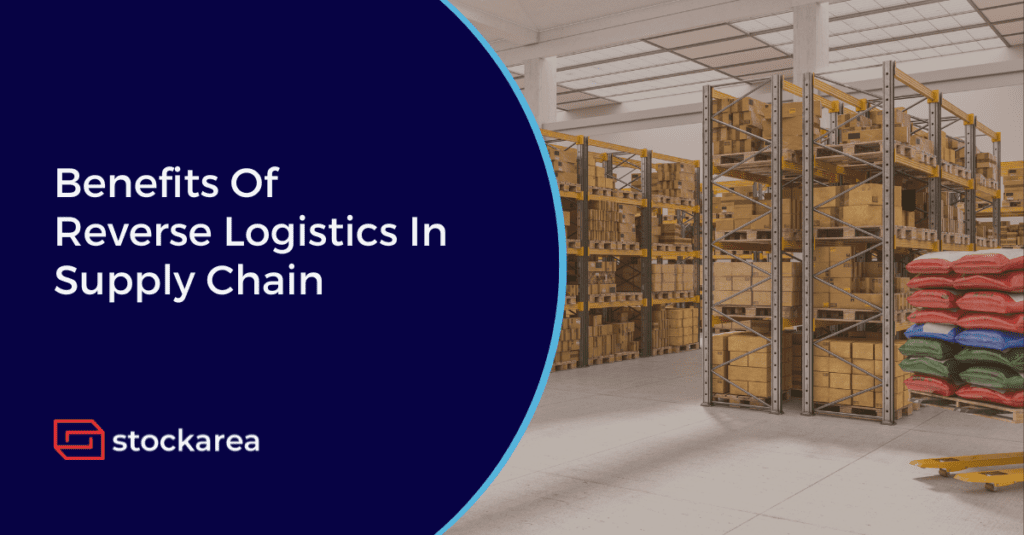Reverse Logistics is an essential process of the supply chain. Reverse logistics entails numerous responsibilities, including optimising supply chain efficiency, improving cash flow, increasing sustainability and reducing losses.
Many SCM companies tend to neglect to optimise their reverse logistics due to the common misconception of it being an additional cost to the industry. However, when successfully executed, reverse logistics can drastically reduce costs and boost asset utilisation, enhancing a business’s profitability and scalability. Understand the following major benefits of reverse logistics in the supply chain.
1. Increases Supply Chain Visibility
Supply chain visibility is predominantly restricted to internal supply chain activities, i.e., from manufacturing and production to distribution. Supply chain companies lack insight into what happens to goods after they leave distribution centres. An effective reverse logistics system extends supply chain visibility to include external activities. SCM companies can monitor the movement of goods after distribution, including returns, exchanges, failed deliveries, and repairs.
Enhanced supply chain visibility also enables businesses to identify and address disruptions in both internal and external logistics operations, resulting in an overall increase in supply chain efficiency. In addition, Reverse logistics also provides consumers with end-to-end visibility on their return process, including pick-up information, return processing, and refund details, thereby enhancing the customer experience.
2. Optimises Product Life Cycle
Customers frequently return products that are either marginally flawed or in good condition, but does not meet the customer’s expectations. These returned products are either discarded or repackaged and resold in the same condition, which shortens the product’s life cycle. However, with efficient reverse logistics, returned products can be utilised to their full potential. According to the product’s condition, the reverse logistics system sorts returned goods for reuse, recycling, restoration, or refurbishment, which are then distributed as new sustainable products.
3. Minimizes Cost
One of the most widespread misunderstandings regarding reverse logistics is that it incurs additional costs for the supply chain industry. However, an efficient reverse logistics system aids the supply chain business in cutting expenses. For instance, reverse logistics saves manufacturing and production costs by enabling the recycling and resale of returned products, thereby recouping the loss of investment on the returned order.
Businesses can also outsource their reverse logistics by enlisting the services of third-party logistics partners since they have more expertise in streamlining the reverse logistics process, which will be cost-effective in the long run.
4. Improves Customer Experience
Customers will only make purchases from an online marketplace with an elegant return policy. With reverse logistics set up, businesses are able to develop a fair return policy that meets customer expectations. A seamless return experience will contribute to customer satisfaction, improving the business’s brand value and increasing customer retention.
Data generated from reverse logistics can be used to address queries, which product category or vendor’s products are returned often, and which consumers return most frequently. Data analysis can aid businesses in gaining a deeper understanding of their customer base and in providing them with top-tier service, hence increasing consumer satisfaction, scalability, and profitability.
5. Waste Reduction
Waste reduction is one of the crucial benefits of reverse logistics. Businesses and consumers are becoming increasingly conscious of the environmental impact of the supply chain industry and the amount of waste it generates. Reverse logistics identify products that can be repurposed that would otherwise wind up in landfills, thereby decreasing waste generation and enhancing product reusability. Increased sustainability is not only helpful to the environment but also to the industry, as it increases revenue through resale and improves customer satisfaction, as many consumers are choosing sustainable solutions to lessen the adverse environmental impact.
6. Risk Management
Reverse Logistics mitigates the risks associated with product exchange and return. Reverse logistics inspects and identifies returned products for safety threats and disposes of them immediately, including products that may contain sensitive information and biohazards. Reverse logistics also mitigate business risks by increasing customer satisfaction and sustainability, hence reducing the possibility of unanticipated financial losses and customer disapproval.
Conclusion
The importance of reverse logistics only keeps increasing with each day in the supply chain industry. As the number of returns keeps increasing, an effective reverse logistics system can be the only way to reduce loss and increase the reusability of products. Reverse logistics can be automated, which leads to benefits like reducing frauds, making data sharing more secure and minimising manual errors during the process.
Related posts
- 6 Effective Ways To Grow Your Logistics Business
- 7 Key Functions Of Logistics Company
- 5 Key Differences Between Supply Chain Management & Logistics
- What Is Reverse Logistics?
- 6 Most Important Facts Of Trucking Industry
- Top 12 Courier Services In Delhi
- Reduce Freight Cost: Best Practices & Strategies
- Reducing Full Truckload (FTL) Costs: 10 Best Practices
- 7 Key Differences between FIFO vs LIFO Inventory Valuation Method
- Top 10 Shipping Companies In Mumbai
- Navigate Supply Chain Disruptions With Digitalization
- How To Start Logistics Business In India
- Standard Shipping vs Express Shipping: A Detailed Comparison
